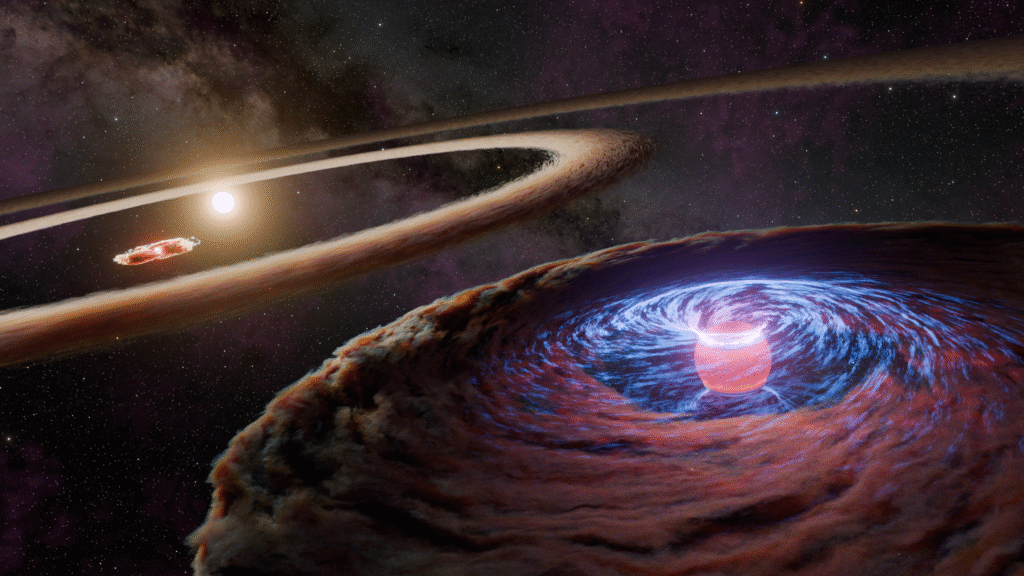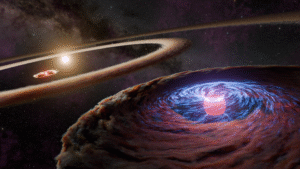Astronomers Capture First-Ever Image of a Protoplanet in a Stellar Ring Gap

In a groundbreaking astronomical first, scientists have directly photographed a young protoplanet forming within a ring-shaped gap in the disk of dust and gas surrounding a star. The object, named WISPIT 2b, is a gas giant roughly five times the mass of Jupiter and only about five million years old—nearly a thousand times younger than Earth. Located approximately 437 light-years away, WISPIT 2b is embedded in a clearing within the protoplanetary disk of its host star, WISPIT 2, offering unprecedented insight into how planets may carve out such gaps during their formation.
The discovery was made using a combination of cutting-edge instruments, including the MagAO-X adaptive optics system at the Magellan 2 Telescope in Chile and the Large Binocular Telescope in Arizona. These tools enabled researchers to capture direct images of WISPIT 2b, not just detect its presence. By observing the system in Hydrogen-alpha light—a specific wavelength emitted when hydrogen gas falls onto young planets—the team identified a distinct dot in one of the disk’s dark gaps. That dot was WISPIT 2b, actively accreting matter as it orbits its star.
This observation confirms a long-standing theory: that planets forming within protoplanetary disks are responsible for creating the ring-like gaps seen around young stars. Until now, no planet had ever been directly observed within such a gap. Even more compelling, WISPIT 2b appears to have formed precisely where it was found, rather than migrating into the gap from elsewhere. As researchers continue to study the system using infrared imaging and other wavelengths, WISPIT 2b may become a cornerstone in our understanding of planetary birth and the early evolution of solar systems.




